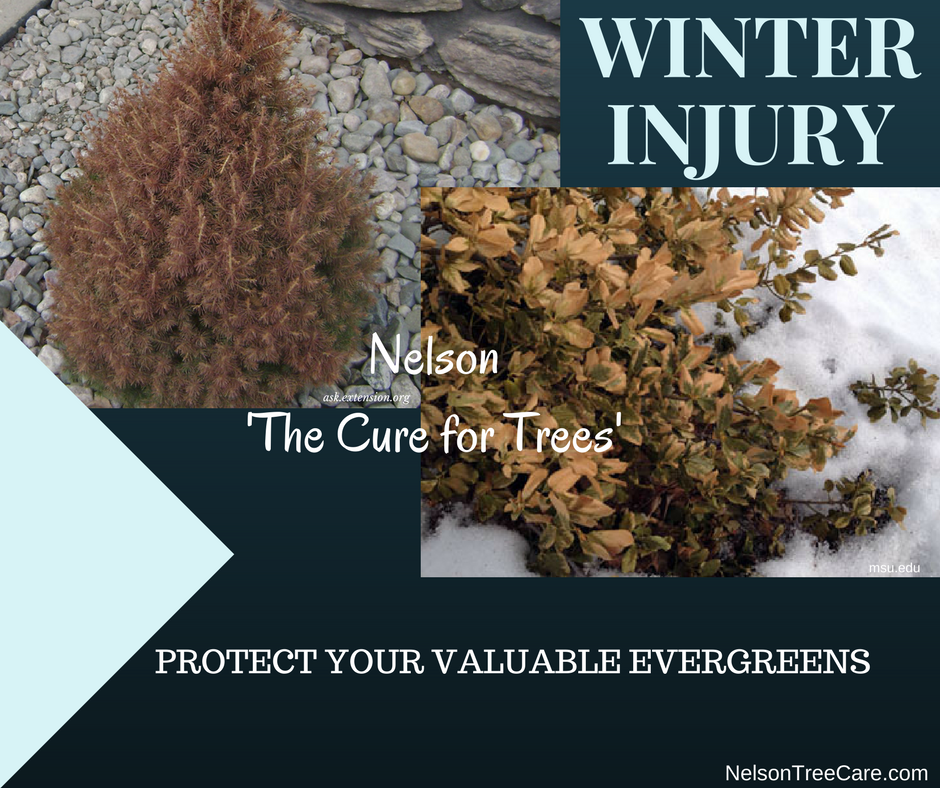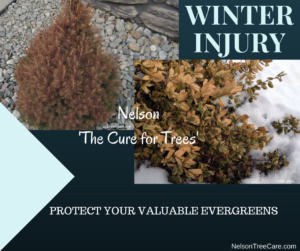
Winter Injury
Winter Injury can include many types of injuries to trees here in the Midwest, but as of late, our Evergreens have been getting hit hard due to the fluctuation in temperatures and environmental conditions we have been experiencing over the last 10-15 years.
According to the Morton Arboretum, Winterburn on Evergreens includes:
A browning or scorched leaf tip on evergreen foliage in late winter and early spring is a form of winter injury. Browning usually occurs from the needle tips downward. Symptoms of winter burn are present on many narrow-leafed evergreens, such as hemlock, juniper, pine, and yew, and broad-leaved evergreens, such as boxwood and rhododendron. Winterburn is usually attributed to desiccation or loss of water through leaf transpiration. Winter sun and winds dry needles. Water in the stems and roots is frozen and unavailable to replenish the loss. A rapid drop in temperature after a warm sunny day can also cause further injury to the plant.
Protecting your Evergreens
We can help you protect your valuable landscape evergreens this year by applying an Anti-Transpirant to your trees and shrubs to help give them a layer of protection from the wind and cold. Treatments begin the week after Thanksgiving, after the shrubs have had a sufficient chance to over winter. If you are interested in protecting your evergreens, give us a call at 815-678-4108. Rates can be as low as $10 per shrub, and vary due to size and quantity.
Call today or fill out our form below for more information:



